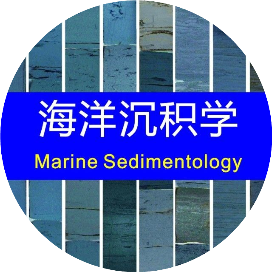研究表明,频繁的红氧化合振荡和沉积物混合有助于粘土矿物对铁的吸收,防止硫化亚铁矿物的保存,并促进铁和钾在粘土矿物中的固定。
不太好翻译,直接用英文吧,强调了粘土矿物对活性铁的吸收。

Title
: Iron redox shuttling and uptake by silicate minerals on the Namibian mud belt
Journal
: Geochimica et Cosmochimica Acta
Authors
: Paul Vosteen, Michael Kossack, Christoph Vogt, Chloe H. Andersen, Sonja Geilert, Matthias Zabel, Florian Scholz
Abstract
: Anoxic marine sediments represent an important source of bioavailable iron (Fe) to the ocean. The highest sedimentary Fe fluxes are observed in open-marine oxygen minimum zones where anoxic bottom waters are in contact with ferruginous surface sediments. Here, sedimentary Fe release, transport and re-deposition (i.e., Fe shuttling) may generate a lateral pattern of sedimentary Fe enrichment and depletion, which can be used to trace redox-related Fe mobility in the paleo-record. However, depending on the balance between terrigenous and authigenic (i.e., shuttle-related) Fe flux, the stability of bottom water redox conditions as well as post-depositional processes of mineral alteration, the sedimentary fingerprint of an Fe redox shuttle may be obscured and difficult to identify. We investigated sedimentary Fe cycling along two transects across the Namibian mud belt with variable terrigenous sedimentation (23°S < 25°S) and during two seasons with opposing bottom water redox conditions (oxic in austral winter versus anoxic to sulfidic in austral summer). On both transects, substantial benthic Fe fluxes up to −50 µmol/m−2(−|-) d−1 were inferred based on pore water profiles. The magnitude of these fluxes is comparable to those reported for other open-marine oxygen minimum zones. On the transect at 23°S, Fe source areas with ferruginous surface sediments were clearly separated from Fe sink areas with highly sulfidic surface sediments. Therefore, Fe redox shuttling was reflected by a lateral pattern of reactive Fe depletion and enrichment relative to the terrigenous background sedimentation. By contrast, on the transect at 25°S, benthic Fe fluxes were temporally and spatially more variable and surface sediments were ferruginous or only weakly sulfidic. Therefore, sedimentary Fe depletion and enrichment was less pronounced at 25°S. In the Fe sink area at 23°S, hydrogen sulfide was present at the sediment surface during both sampling campaigns and solid phase data suggest that Fe sulfide minerals represented the main burial phase of reactive Fe. By contrast, at 25°S excess Fe was associated with potassium (K) rather than reduced sulfur. While a differing sediment provenance cannot be ruled out entirely, combined evidence from pore water silica profiles, K to Fe stoichiometric relationships and electron microprobe images suggest that laterally derived excess Fe was incorporated into pre-existing and/or authigenic clay minerals during early diagenesis. Iron uptake by clay minerals may be supported by frequent redox oscillations and sediment mixing preventing preservation of Fe sulfide minerals and promoting Fe and K fixation in clay minerals. The burial fluxes of excess Fe associated with sulfide minerals at 23°S and silicate minerals at 25°S were similar. Our findings thus underscore that neoformation or alteration of silicate minerals can be important processes within the low-temperature marine Fe cycle.













